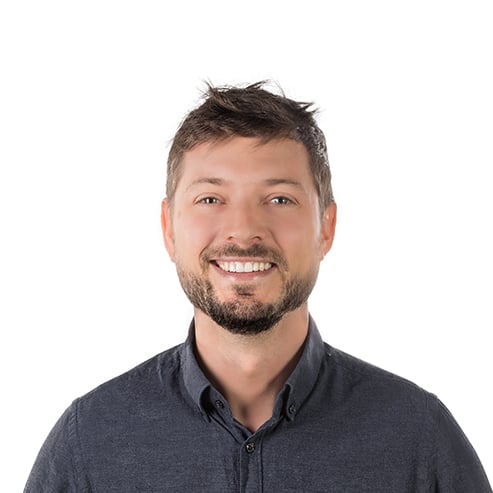Robot End Effector: Definition and Examples

End Effector Definition
End effector is a generic term that includes all the devices that can be intalled at a robot wrist. Synonyms of end effector are end of arm tooling (or EOAT), robot peripherals or robot accessories although these last two terms are not as precise and can include devices that are not necessarily installed and the end of the robot arm.
End Effector Types
Classic examples for industrial robots are listed below.
Grippers

Grippers are the most common type of end effector. They can use different gripping methods and actuation styles. You can read about this topic in our article on how to choose the right gripper for your application.
Brands of robot grippers include Schunk, Robohand, PHD, SOMMER and, of course, Robotiq.
Force-Torque Sensors
Force-torque sensors (FT sensors) are pucks installed between the robot flange and the tool that interacts with the part. They measure the force and torque that the robot applies to the part through the tool. They are called 6 axis force-torque sensors because they measure 3 force components (x-y-z) and 3 torques around those axes. FT sensors are used when the force that the robot applies need to be controlled. Typical applications can be part insertion, assembly, deburring, sanding, etc.
Brands of force-torque sensors include ATI, JR3 and Robotiq.
Material Removal Tools
This category includes cutting, drilling and deburring tools installed as robot tools.
Brands of robot cutting tools include ATI and RAD
Welding Torches
Welding is a very popular robotic application. Welding torches have thus become very efficient end effectors that can be controlled in a sophisticated way for optimized welding. Some torches also come with wire feeder for an even better control of the process.
Brands of robot welding torches are Tregaskiss, Binzel, SKS and Fronius.
Collision Sensors
Collision sensors are used to prevent damaging the robot tooling and the parts being processed. They can disengage or send a signal to the robot to stop at any moment when a collision is detected.
Brands of collision sensors are ATI, RAD and Applied Robotics.
Tool Changers
Tool changers are used when many different end effectors need to be used in sequence by one robot. They are used to standardized the interface between the robot flange and the base of the tool. They can be manual or automatic.
Brands of tool changers are ATI, RAD, Applied Robotics and De-Sta-Co.
End Effector Control
The control of the end effector is done by the robot controller. For the simpler ones, discrete I/Os will be used. For end effectors that need to communicate more information to and from the robot, industrial communication protocols are used.
End Effector Design
For very special jobs, the end effector will be custom made by the people involved in the process. It can be a specialized robotic integrator or the end-user. For basic jobs, off-the-shelf components are preferred to reduce the cost and the meantime between failures that can be lower for custom designs.

The 2-Finger 85 Adaptive Gripper is an example of an electric gripper end effector, controlled by standard communication protocols, intended at applications such as high-mix assembly.







Leave a comment